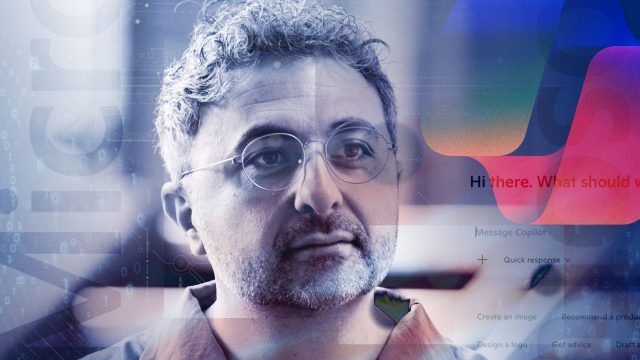
The tech giant has announced an initiative that will pivot the company away from its relationship with entrepreneur Sam Altman’s OpenAI, instead of developing its own artificial intelligence system. While Microsoft’s products come embedded with OpenAI software after a 2019 partnership, the company’s push for AI independence is fueled in part by company AI CEO Mustafa Suleyman’s efforts to recenter human beings in the search for digital superintelligence. But as AI fever continues to sweep through the halls of industry, education and everyday life, where does Microsoft’s human-centric vision for the technology fit?
A ‘very tough tradeoff’ for an AI ‘accelerationist’
A recently renegotiated agreement with OpenAI has allowed Microsoft to establish a new internal “Superintelligence Team” to develop the company’s digital intelligence capacity while putting “human interests and guardrails first,” said The Wall Street Journal. While AI may become “more humanlike,” it will never experience “suffering or pain itself,” Suleyman said to the paper. “Therefore we shouldn’t over-empathize with it.” The goal, Suleyman said, is to create “types of systems that are aligned to human values by default.” Definitionally, that means those systems “are not designed to exceed and escape human control.”
A self-described AI “accelerationist” who wants to “go as fast as possible,” said Semafor, Suleyman nevertheless believes it will be “necessary” to give up “some level of capability” so human beings “remain in control” of the nascent technology. However, doing so will be a “very tough tradeoff,” Suleyman said to the outlet, “because in the history of humanity, we haven’t had to do that.” In a separate interview with CNBC, Suleyman admitted he had been “roasted” by one of his own conversational AI programs as being the “ultimate bundle of contradictions” for both his accelerationism and warnings thereof.
By framing its AI push in terms of “humanist superintelligence,” Microsoft is making a “deliberate effort to contrast” its work with the more “technological goals” of other AI developers, Fortune said. Microsoft’s initial offering will focus on “three core applications,” said Seeking Alpha: “AI companions for everyone; medical superintelligence,” and what the company described as “plentiful” clean energy.
Running counter to regulatory currents
The push to develop digital superintelligences is the “new goalpost for AI development” at large, even if the term itself is “imprecise” at articulating “how capable, exactly,” the technology would need to be to qualify, said Bloomberg. At the same time, Microsoft’s emerging focus on “safety and human-centricity” comes as industry regulation “moves away from a focus on those areas,” said Axios. This poses a risk to Microsoft’s more cautious vector, which could “prove costlier or less efficient than those developed with fewer safeguards.”
Microsoft’s steps into the ongoing race for superintelligence will be programmed with a focus on “containment,” the Journal said. That will include “probing and testing the models to ensure they only communicate in a language that humans understand” as well as creating systems that “avoid appearing as if they are conscious.”
The iconic tech giant is jumping into the AI game with a bold new initiative designed to place people first in the search for digital intelligence




